Building a Pokemon TCG deck
Last year, I started playing Pokemon TCG - a trading card game where you have a deck of own cards and play against an opponent, battling each other with Pokemon of your choice.
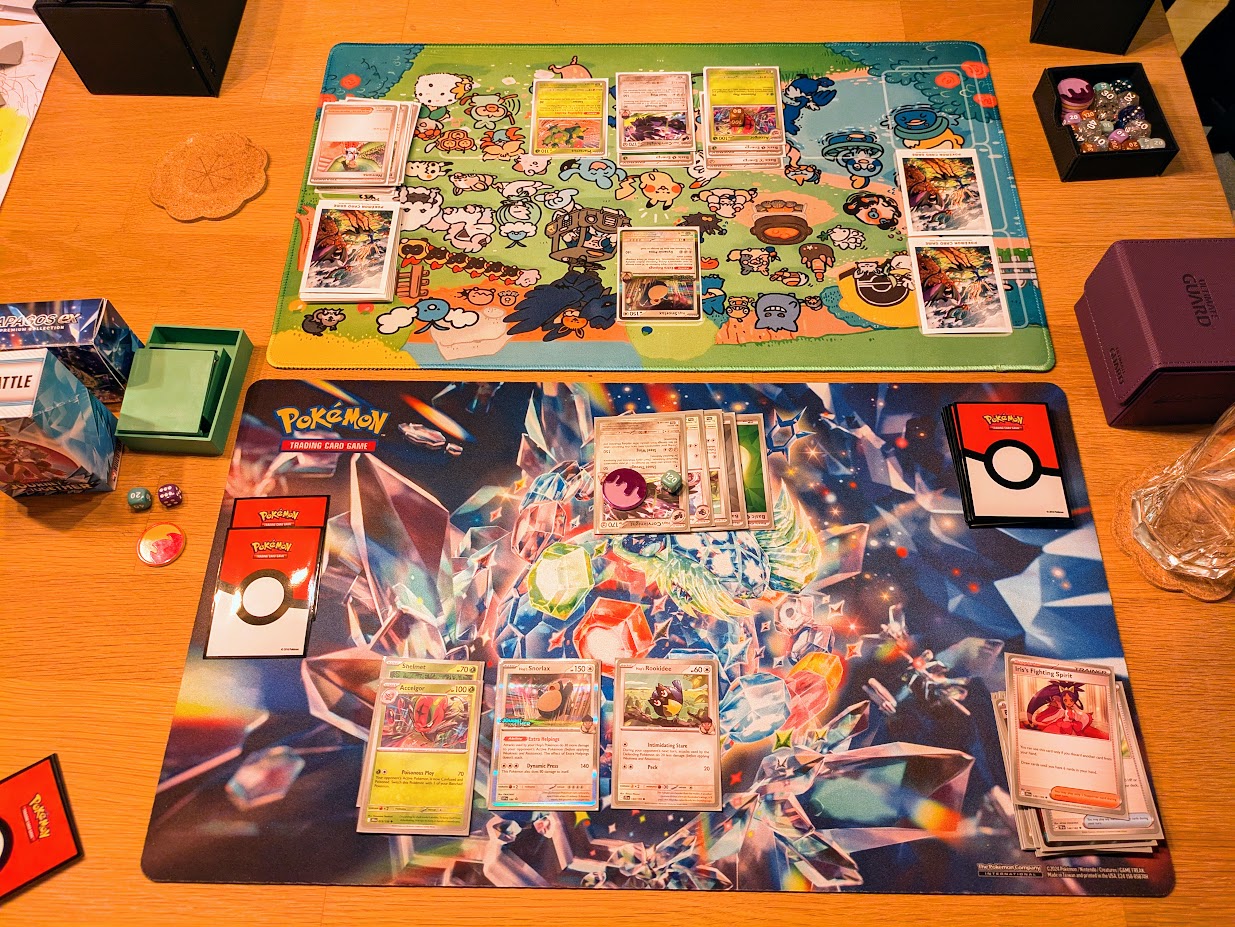
One aspect of Pokemon TCG is collecting cards, which can be fun on its own, but it can get a bit expensive. Especially with the "Prismatic Evolution" generation, prices skyrocketed, but the Pull rates seemed much lower than on previous generations. "Pull rate" is the chance to get a special or rare card if you open up a Booster (a pack of 10 random cards).
The other aspect is actually playing the game, and luckily, cards can also be bought directly on sites like cardmarket, and even for expensive cards there often is the exact same card but with a "standard" visual art on it, so it stays affordable.


A full deck consists of 60 cards, and can contain the following main types of cards:
- Pokemon, which can attack the opponent Pokemons
- Trainer cards: Either Supporter, Item or Pokemon Tool cards, helping out the Player in various ways
- Energy cards, which are needed for a Pokemon that it can execute an attack.
Here's an example for each type:
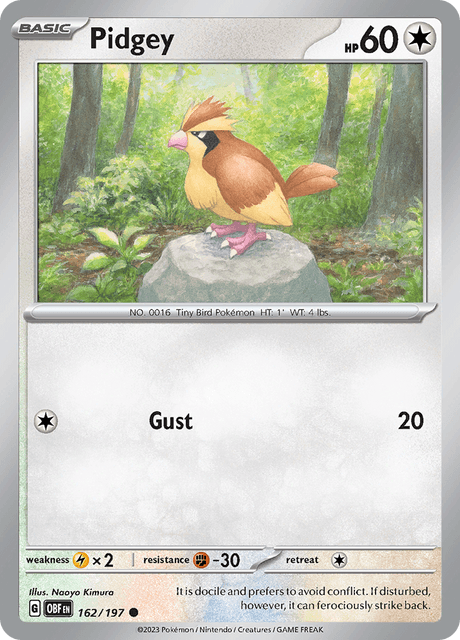
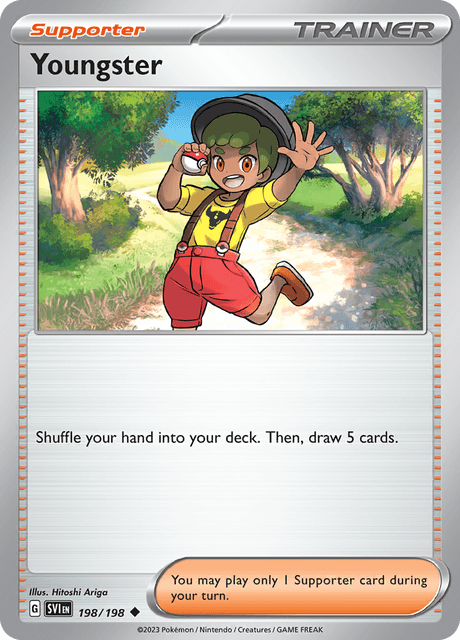

To start, players draw 7 cards from their deck into their hand, and then take turns. If it's your turn, you draw a card, play some Pokemon from your hand to your bench, attach an energy card, and if you want (and have any), you can play Trainer cards.
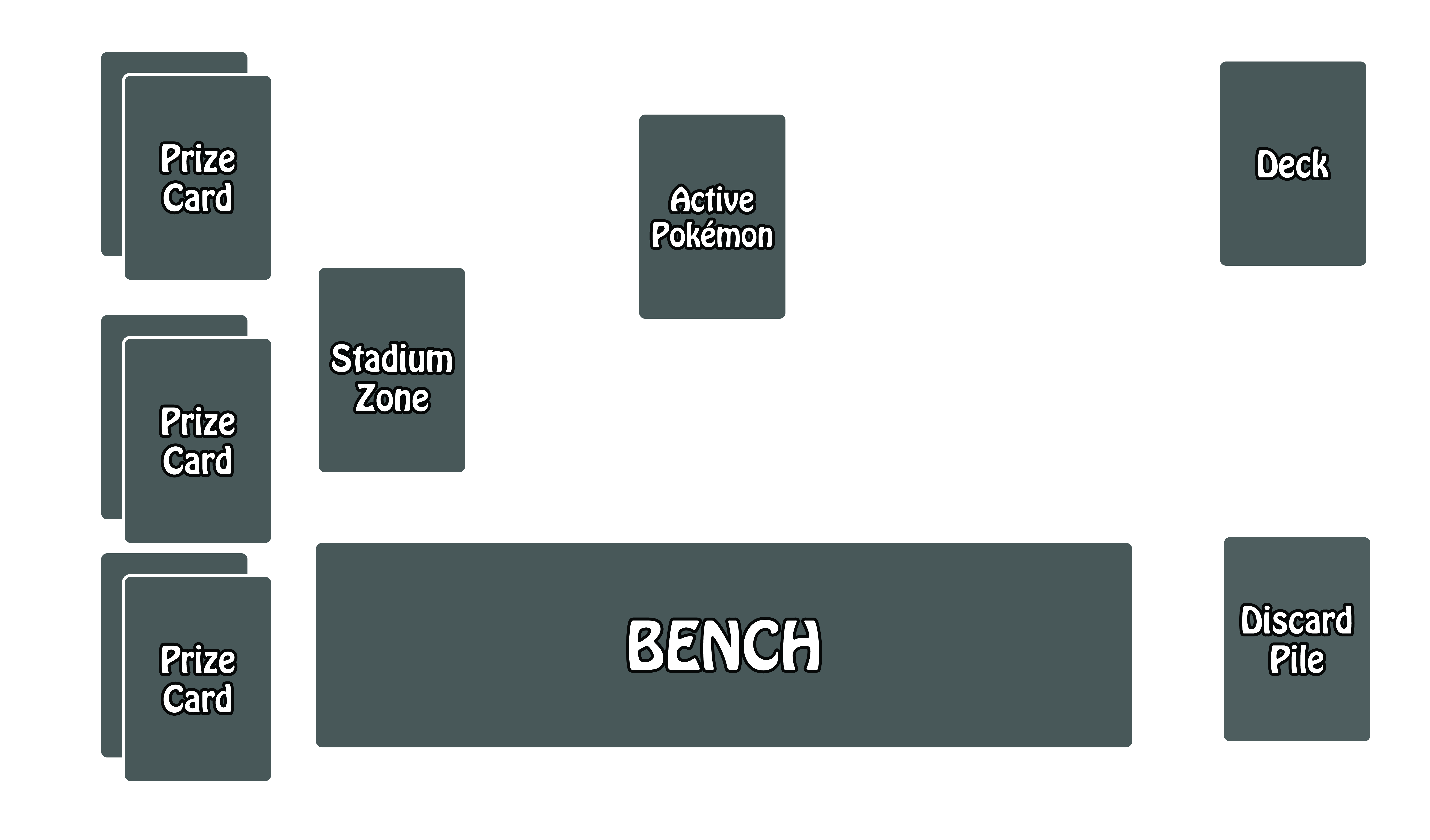
At the end of your turn, you can attack with your Pokemon that's in the active spot, if you have the necessary Energy attached.
If a Pokemon is knocked out, your opponent can take one or two prize cards, depending on the Pokemon, and if he has no more left (both players start with 6 prize cards), the game is over. Simple as that! :-)
If you're interested in learning more, the official rulebook is a good guide with a lot of examples to get started.
Building a deck
Now the interesting thing is to create and optimize a deck. After choosing one or more main Pokemons, how can a deck be built and optimized to its full potential?
For example, recently I encountered a Kangaskhan ex, a card which I got by chance from a Booster pack:

The first attack for one colorless Energy is an ideal starter: Draw 3 more cards. The second attack for 3 colorless Energy is a gamble, but will offer up to 400 damage, if lucky.
I didn't play any deck with a lot of randomness before, because you never know how it turns out, but the idea of a lot of potential damage intruiged me.
So starting with our Pokemon, how can we be sure to get them onto the bench? We can use the Nest Ball, which lets us draw a basic Pokemon from the deck, and additionally there's also Arven, which we can use to get the Nest ball from the deck.
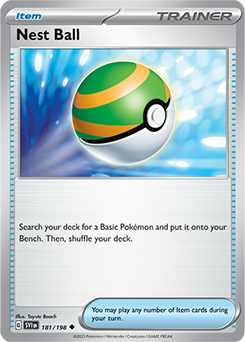
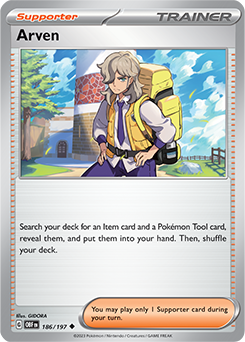
So now we're pretty sure to have a good chance to get our Kangaskhans from our deck. But we still need 3 energy before we can first use the (potentially) strong attack, and we can only attach one energy per regular turn. Luckily there's Crispin, which lets us attach an extra Energy to a Pokemon:

So with this, there's a chance we can already attack on our second turn.
With the basic setup of Pokemon and Energy retrieval in place, we can think of ways to increase the damage if needed (for example, if the opponent's Pokemon has just something over 100 damage left), for example with Vengeful Punch and Black Belt's Training:
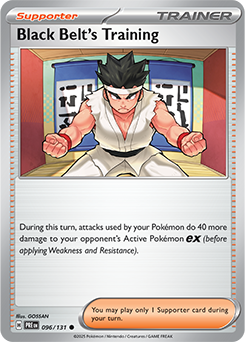

To top it off, I added Legacy Energy, which reduces the prize cards taken from 2 to 1 for a Pokemon EX, allowing me to play all 4 Kangaskhans.

(Normally, after 3 defeated EX Pokemon, the game would be over, but with Legacy Energy, only 5 out of 6 prize cards would be taken.)
After playing once with the deck, I noticed that I was not prepared for status effects like being asleep, or also Boss's Orders - once my main Kangaskhan was blocked sleeping in the Active spot, and another time my Kangaskhan was switched with one that didn't yet have energy attached, and I didn't have a chance to switch it in both cases, except for retreating it for 2 energy. So I added Switch:

What I can really recommend is a deck builder, to play around with possible deck ideas. I mainly use Limitless TCG. You can search for cards and also filter by regulation mark, so you don't unintentionally put in cards that are no longer allowed.
One other great feature is Playtest: With a given deck, you can simulate the start of a game and even manually draw cards as if it were your turn, discard cards etc.
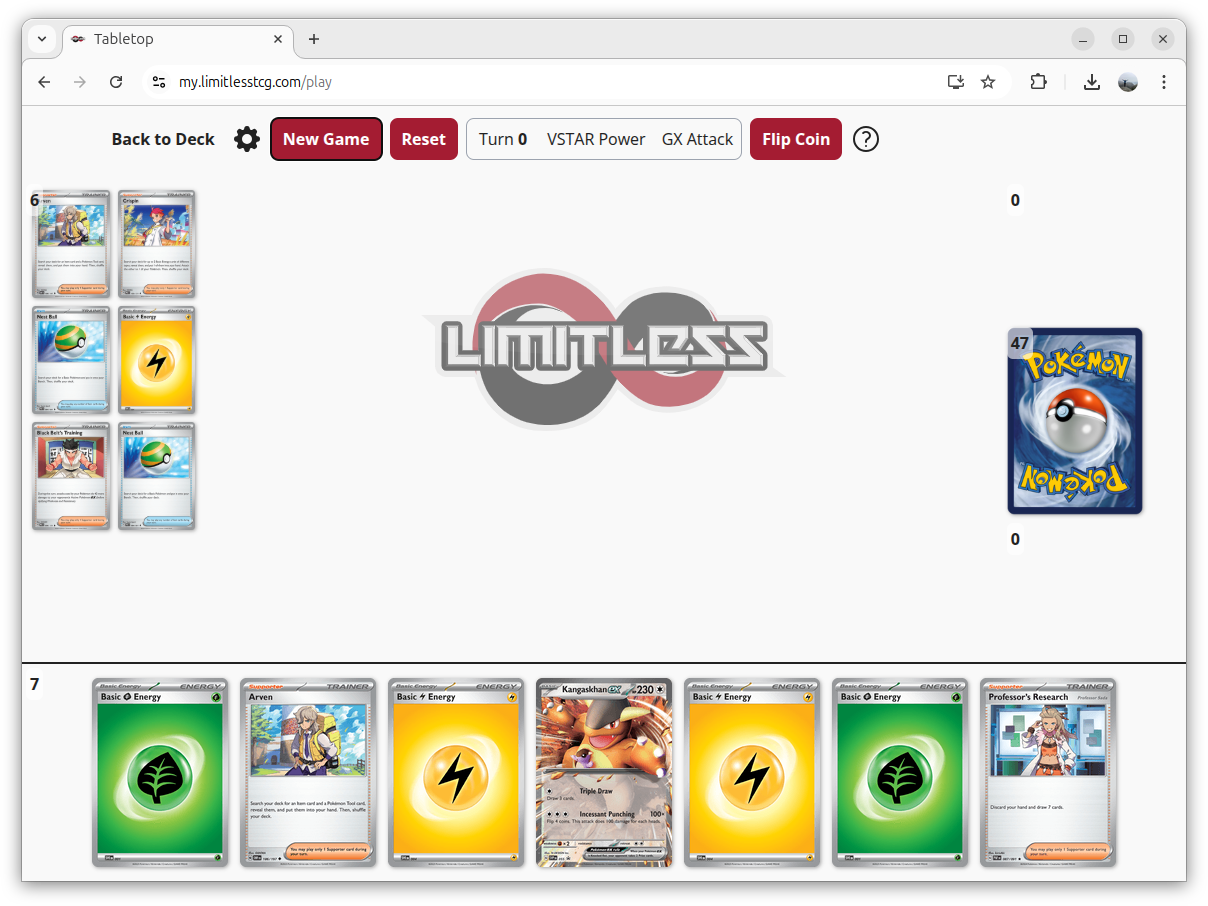
It can be immensely useful to see what possible start configurations you can get and how to deal with a certain hand, or even with some important cards burried in the prize cards.
Knowing your draw engine
The term draw engine is used to describe the mechanics for getting to the cards you need in a reliable way, which is a central aspect of every deck, regardless of which Pokemons are used. (By the way, the page linked by JustInBasel is just a great resource in general, so make sure to check it out!)
There are several ways how this can work:
- Draw more cards from the deck, e.g. Nemona or Kangaskhan we saw above
- Get cards back from the discard pile, e.g. Dark Patch, Night Stretcher
- Search for specific cards in your deck, e.g. Nest ball or Pidgeot
- Proxy cards which increase the chance to get to another card, e.g. Arven to get to a Nest ball
There are also setups where an attack triggers moving an Energy from the Active Pokemon to a benched Pokemon, like with Iron Thorns ex, so an attack also serves as a preparation for another Pokemon.
I'm sure there's many more, as I've only been playing for around 8 months now - I'm looking forward to explore more!
As a side note, sometimes things (decks) can get tricky, as there's always ways to improve. I sent this picture to my friend while preparing a Hydreigon deck:
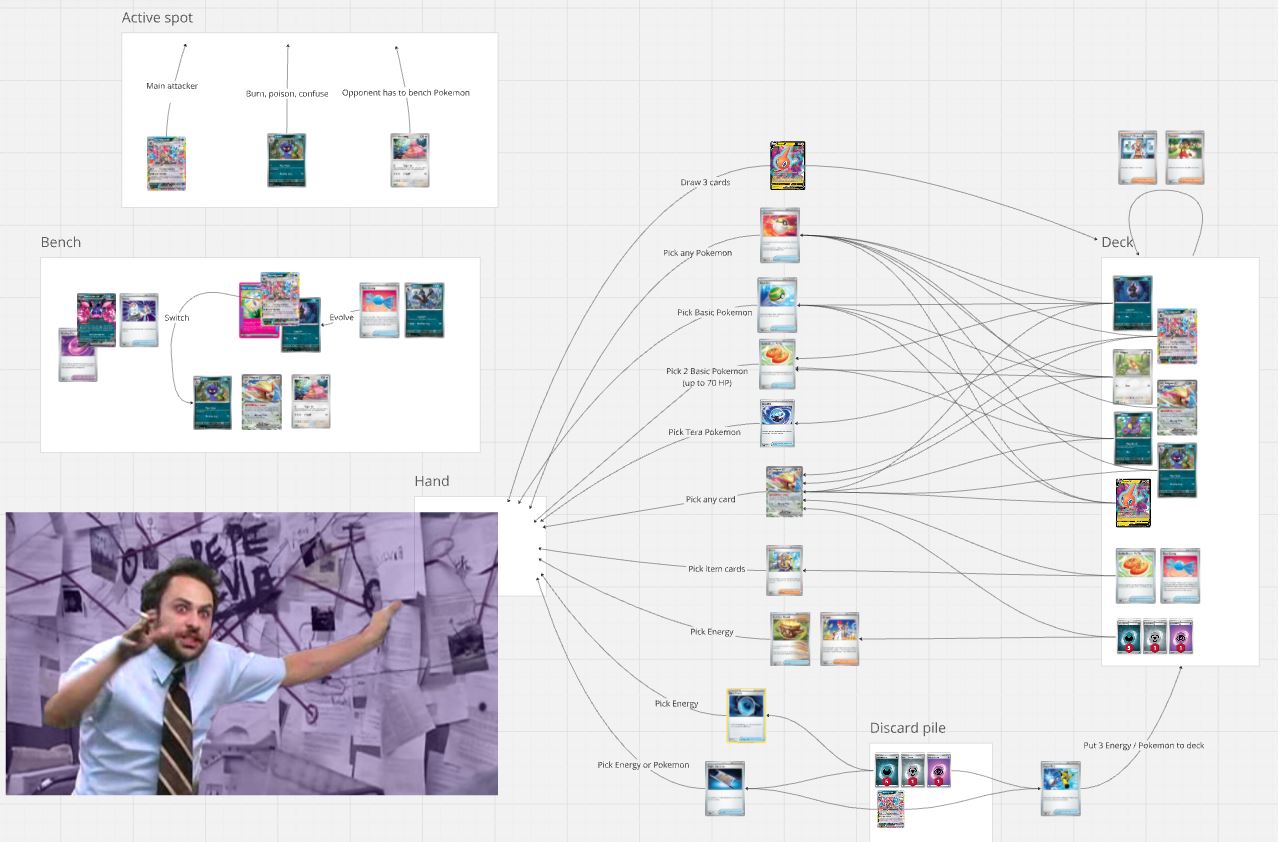
Thanks for reading and happy playing & deck building!